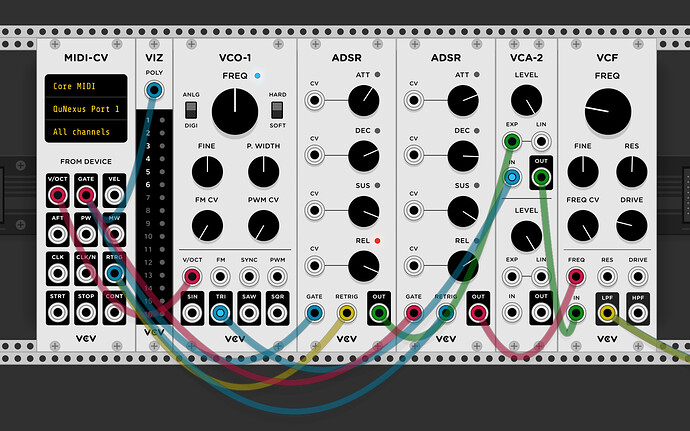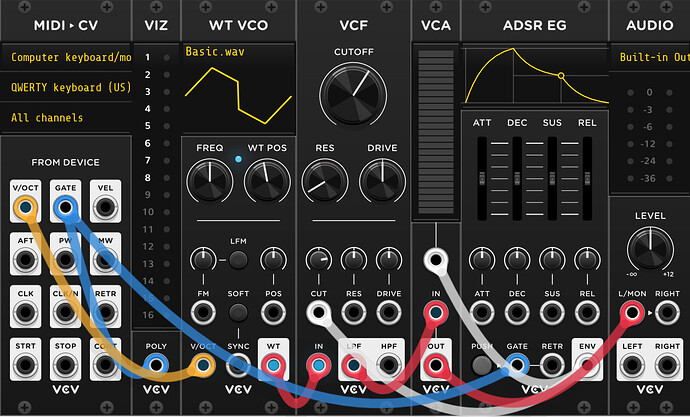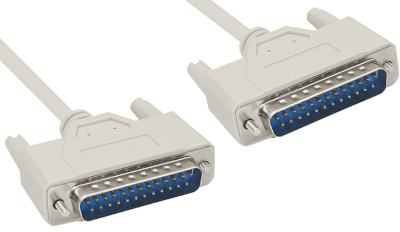I know this is a very old thread and hope that it’s ok to respond to it this far down the road.
I’ve been working on developing a “new-user’s” understanding of polyphony this week, and I’m really happy to have discovered this brief exchange. It’s been a big boost to my grasp on the matter (while still leaving a mystery or 2 for me to unravel).
As I say, I’m new to VCV and have my work cut out for me getting up to speed with all it offers and involves.
As part of that, I was myself exploring polyphony but had no luck deriving my “expected result” of getting multiple pitches to sound in response to the simultaneous press of 2 or 3 keys on my MIDI controller.
In my attempts I was sure to select the desired MIDI-CV Polyphony Channels setting, and that I was using modules that supported polyphony.
However a number of different patching exercises and experimentation with Polyphony Mode settings too all gave the same result: only a single pitch was sounded at a time no matter how many keys I held down.
So I read up a bit on synthesis polyphony in general and what I came across indicated that (insofar as I was able to understand the article) true polyphony seems to have been a “big ask” – in the analog hardware realm, at least – requiring an extensive support structure of dedicated oscillators, octave dividers, VCA’s and so forth, per key!
I asked some friends who use hardware modular rigs, and they pretty much said “Oh I have enough I can do with mono, I don’t really get into polyphony like what you’re talking about.”
From these I adopted the thought that the usefulness of VCV “Polyphony” must somehow also apply to other results or processes that produce or enable results that are different from just “more than one pitch at the same time.”
But then I found this enormously illuminating post and immediately decided to replicate the patch as illustrated, which leads to the point of this long-winded submission:
I can’t swear to having replicated the illustrated patch with 100% accuracy because some of the multiple-connections were a bit hard for me to trace, and some of the modules in the original look different now or don’t exist (I couldn’t find VCA-2, for example). So I guessed that this patch was perhaps developed “pre-Rack 2.”
But I got as close as I could, with the same result as before: only a single pitch at a time regardless of how many keys are pressed.
This led me to conclude that something was incorrect about my patchwork, and I was about to go back and trace everything out once again when I took a shot in the dark and added the Sum module as suggested by AlanF.
Holy cow! Harmony! Dissonance! Whatever you want, up to 6 simultaneous pitches at a time! A happy result, but once again – not the expected result.
Because – the way I interpreted AlanF’s suggestion – the addition of Sum was only intended to save on system resources, and not cause the sounding of multiple pitches to occur. So far as I understood jdev’s original post, the illustrated patch should have produced the “expected polyphony” I had imagined even without Sum.
So I’m sure I got something wrong at the get-go, and I’m going to go back and retrace, with Sum removed, to see if I can derive the multiple pitches that way.
It’s been a very interesting exercise so far though, and I just wanted to thank jdev & AlanF for making something that was on the way to seeming all but impossible a real, working thing. (The “understanding it all” part will have to be my next project!  )
)





